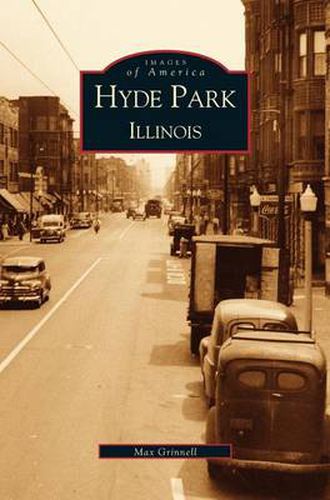Readings Newsletter
Become a Readings Member to make your shopping experience even easier.
Sign in or sign up for free!
You’re not far away from qualifying for FREE standard shipping within Australia
You’ve qualified for FREE standard shipping within Australia
The cart is loading…






This title is printed to order. This book may have been self-published. If so, we cannot guarantee the quality of the content. In the main most books will have gone through the editing process however some may not. We therefore suggest that you be aware of this before ordering this book. If in doubt check either the author or publisher’s details as we are unable to accept any returns unless they are faulty. Please contact us if you have any questions.
Since the early twentieth century, Hyde Park has been known as a refuge and incubator for intellectuals, artists, novelists, poets, and free thinkers. Its best known institution, the University of Chicago, drew many of these persons close to its boundaries with the promise of a steady diet of conflicting ideas and lofty conversations. Throughout the first few decades of the twentieth century, Hyde Park went through a steady period of growth, both in residents and the construction of a dense network of walk-up apartment buildings and commercial facilities that offered a stark contrast to the more bucolic atmosphere of Hyde Park before the Columbian Exposition of 1893. By the late 1940s, parts of Hyde Park were showing signs of blight, as the area continued to house larger numbers of migrants from other depressed areas of the United States and programs of deferred or nonexistent maintenance began to have irreversible effects on the built environment. Images of America: Hyde Park, Illinois, focuses most of its attention on the period after World War II, all the way through the creation of the Hyde Park-Kenwood Urban Renewal Project, the first major urban renewal project in the United States.
$9.00 standard shipping within Australia
FREE standard shipping within Australia for orders over $100.00
Express & International shipping calculated at checkout
This title is printed to order. This book may have been self-published. If so, we cannot guarantee the quality of the content. In the main most books will have gone through the editing process however some may not. We therefore suggest that you be aware of this before ordering this book. If in doubt check either the author or publisher’s details as we are unable to accept any returns unless they are faulty. Please contact us if you have any questions.
Since the early twentieth century, Hyde Park has been known as a refuge and incubator for intellectuals, artists, novelists, poets, and free thinkers. Its best known institution, the University of Chicago, drew many of these persons close to its boundaries with the promise of a steady diet of conflicting ideas and lofty conversations. Throughout the first few decades of the twentieth century, Hyde Park went through a steady period of growth, both in residents and the construction of a dense network of walk-up apartment buildings and commercial facilities that offered a stark contrast to the more bucolic atmosphere of Hyde Park before the Columbian Exposition of 1893. By the late 1940s, parts of Hyde Park were showing signs of blight, as the area continued to house larger numbers of migrants from other depressed areas of the United States and programs of deferred or nonexistent maintenance began to have irreversible effects on the built environment. Images of America: Hyde Park, Illinois, focuses most of its attention on the period after World War II, all the way through the creation of the Hyde Park-Kenwood Urban Renewal Project, the first major urban renewal project in the United States.